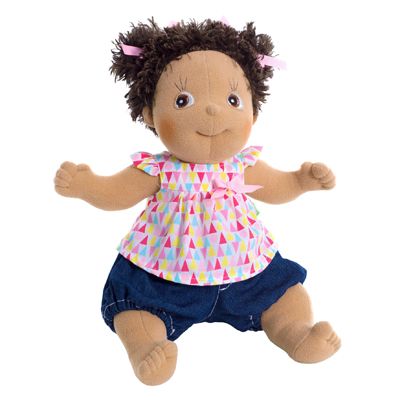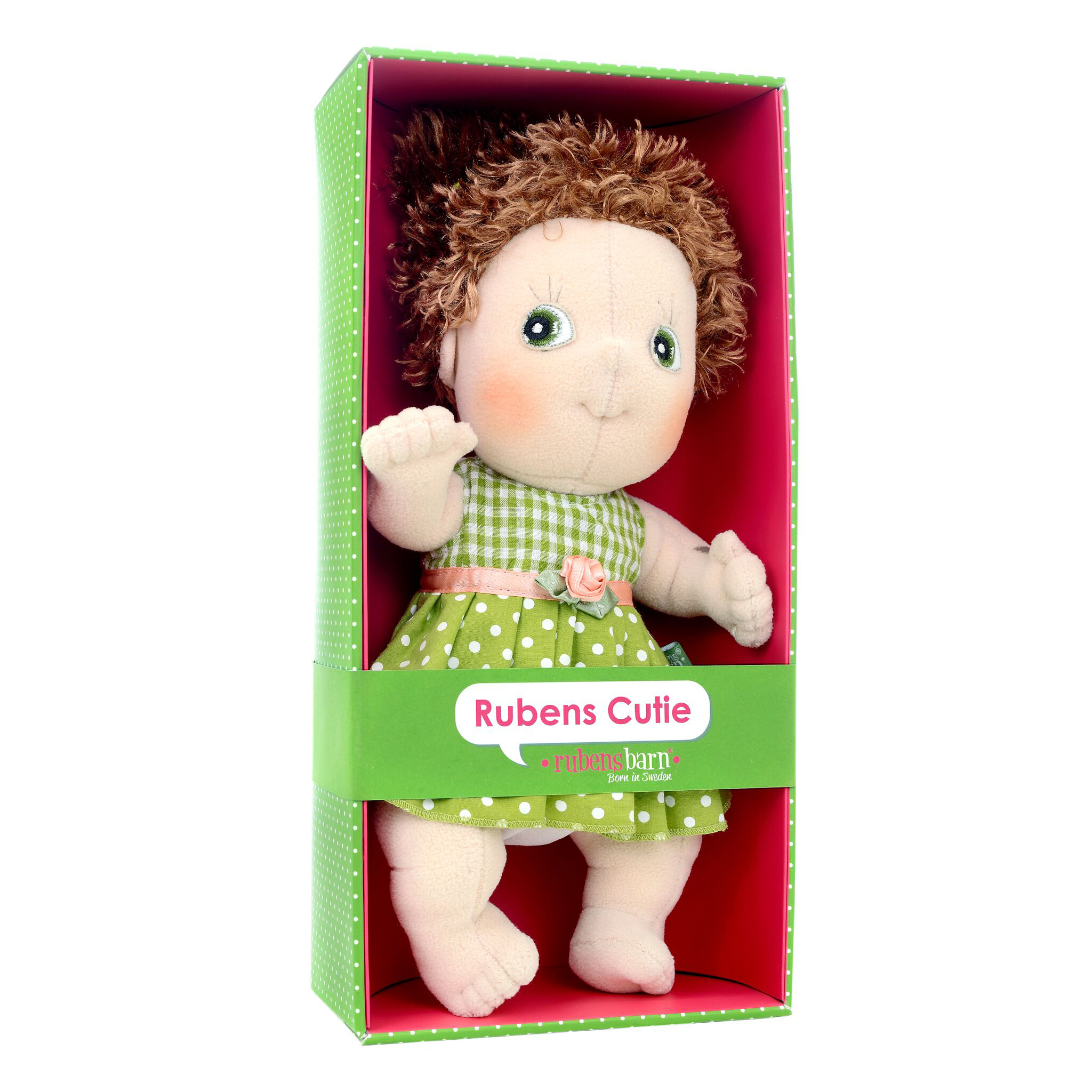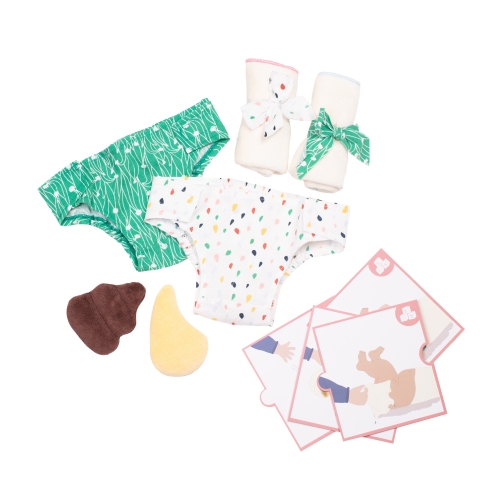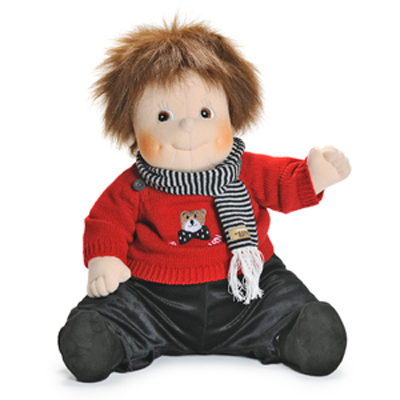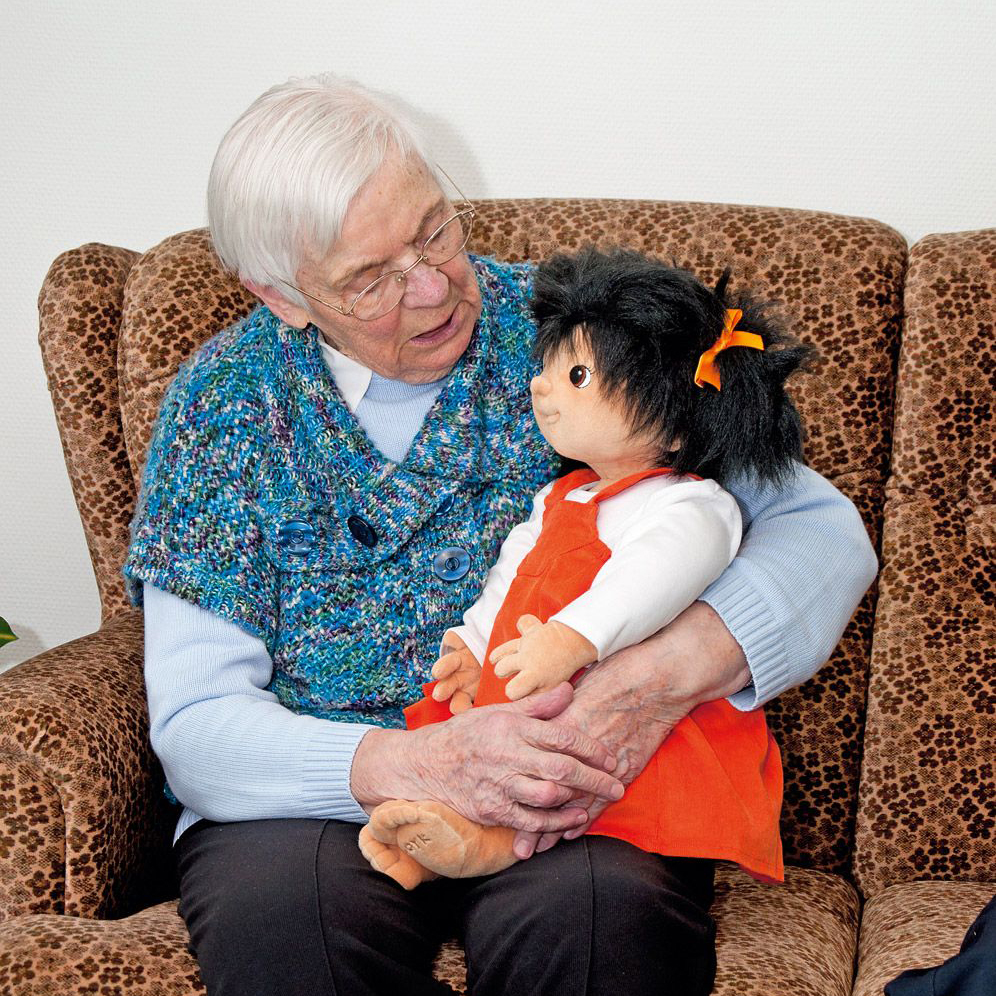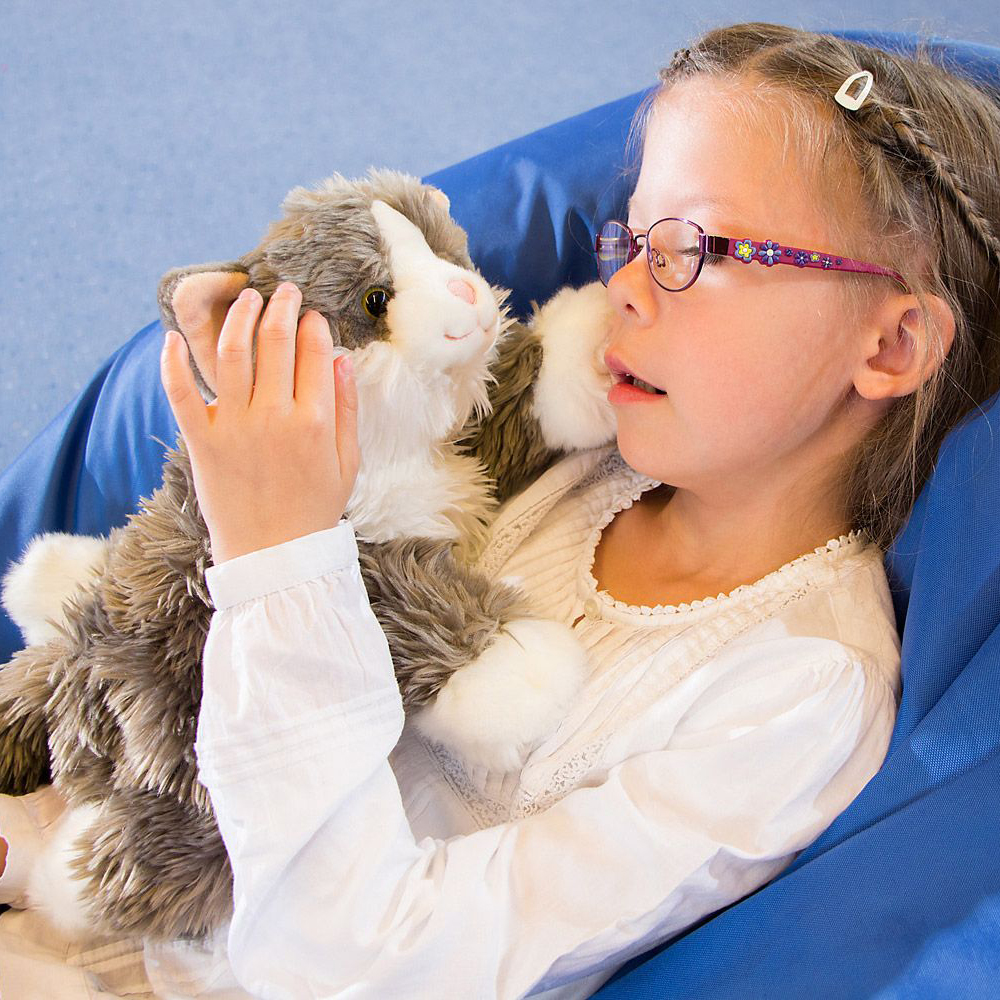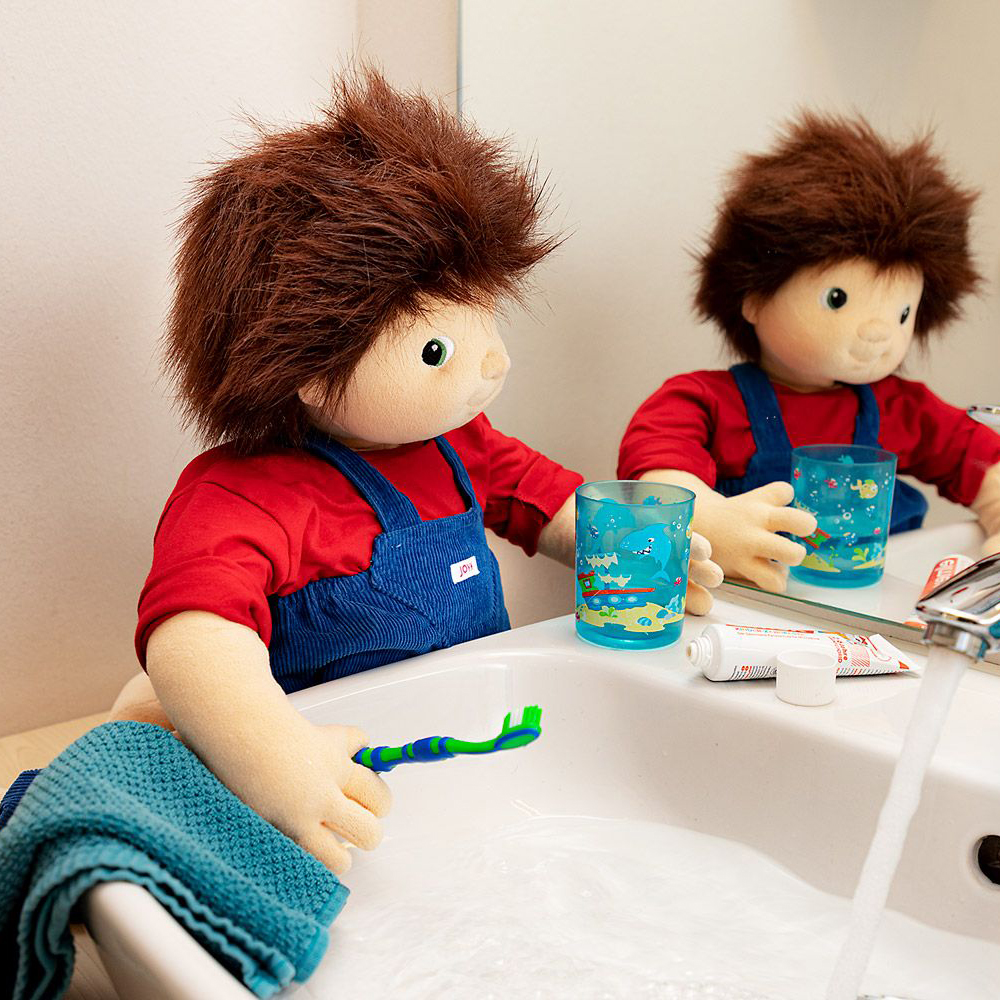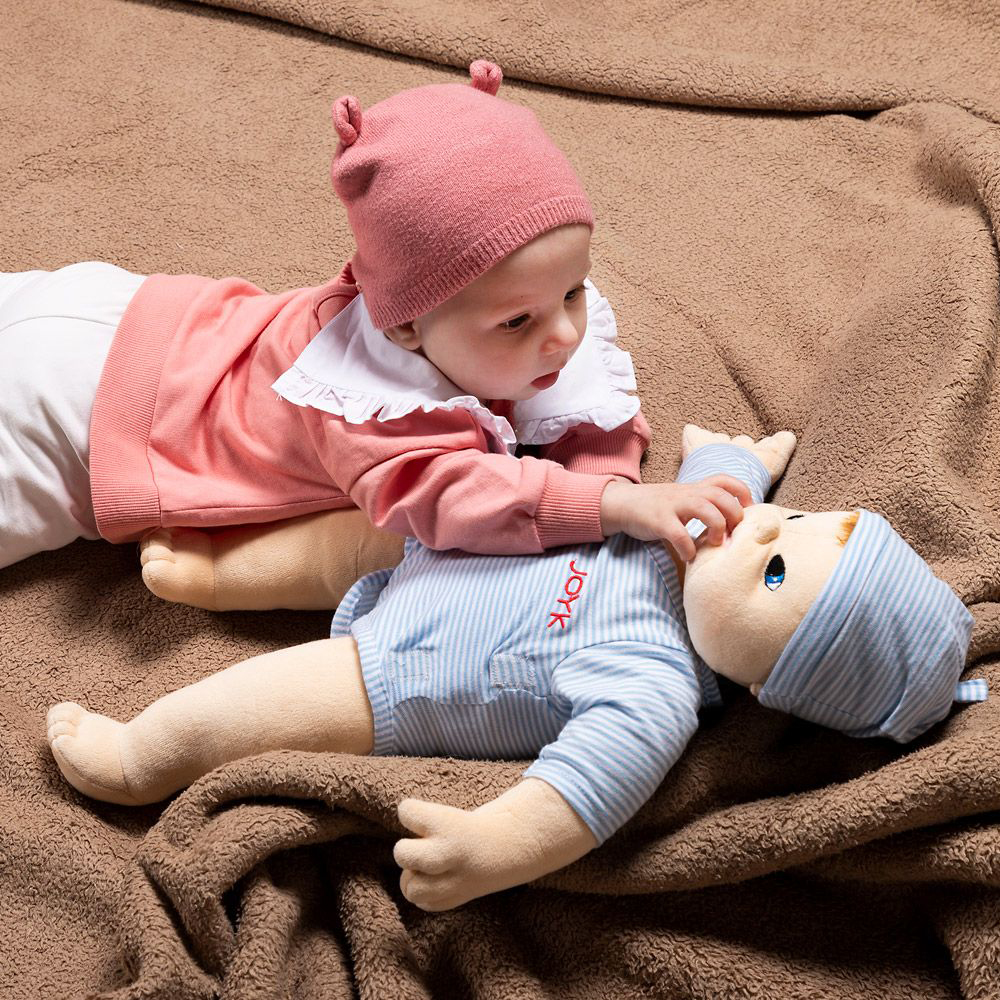Empathy dolls as play dolls and for use in therapy
Rubens Barn dolls
This ist the wonderful collection of fabulous Rubens Barn empathy dolls. Each doll is designed to share and experience emotions, situations, atmosphere like inspiration, fantasy, suggestion, feeling of security, closeness, joy, sorrow and so on.
The Rubens Barn dolls instantly capture the heart of small and big doll mommies and doll daddies by their personal presence.
Made by detailed, specific manual work at 100 %. Each character has its own precious look and personality to complement its owner. But for all that each Rubens Barn doll gives its owner plenty of leeways to be filled with specific emotions, contents, requirements and situations.
The empathy dolls are also excellent in the care of dementia sufferers.
Due to their similarity to a real babys affected feel transported back in their parenting role and dedicate the "child" attention, affection and trust - the natural instinct is awakened. Aggression may decrease thereby.
Joyk dolls
Empathy Dolls Approach
Joyk empathy dolls are substantially soft bodied dolls with a wonderful personal charm. Joyk Empathy dolls have been designed to stimulate empathy and promote conversation. They are weighted in the bottom to enhance the feeling of holding a real baby. When cradled in your left arm the dolls provide eye contact, essential for creating emotional ties.
The dolls soon become part of the class or family and through empathy for the doll the children are quickly able to explore a wide range of social and emotional issues.
It is not just important to develop a child's ability to empathize with others, but to create a setting where children are able to discuss and explore their reactions to these feelings in a non-confrontational and supportive atmosphere.
An empathy doll serves an entirely different purpose to the traditional role play dolls, as the child views its interactions with the empathy dolls as "meeting another member of the group". The child interacts with the empathy doll which has its own set of stories to tell. This will include many things over time including its name, age, family, likes and dislikes, experiences and beliefs.
The idea behind empathy dolls is that they draw attention, being a unique individual with their own background and persona. Over time, as empathy for the doll develops with the children, it then becomes possible to discuss feelings which may arise from conflict or new experiences, without making an issue of the colour of the doll's skin or its differing abilities or family background.
Learning Potential
- To encourage children to develop conversational language.
- To encourage discussion and develop understanding about social issues.
- To develop parents awareness of the role of play.
- To develop children's own confidence and language skills through play.
Creating your doll's identity
The identities you create for your empathy dolls should take into account the existing knowledge you have of the children in your care and their own backgrounds and experiences. By considering the following areas when building the identity of your doll you will be able to create an individual which can be empathized with by more than one child. Take care to make sure that a doll does not directly reflect any one individual within the setting.
Physical Characteristics
- consider which racial groups are represented and which skin colours are and are not present within the group. Think about different eye and hair colours. Do any children have differing physical abilities which require wheelchairs, glasses etc.? Do any of the children have distinguishing marks such as birthmarks, moles or freckles? Can the dolls be adapted to include these features?Ethnic and cultural backgrounds
- what ethnic and cultural groups are represented in the classroom? Are there eastern European, southern European, Arabic, African, Asian or Indian children within your group? Are there children who have just moved to this country from elsewhere to escape prejudice or persecution and are not yet citizens? Are there different languages which are spoken at home or are the children's main language? Are there traditions which are observed by the child's family at home? Every child has their own cultural background.Socio Economic Status
- Do the families in your group struggle to make ends meet? Or are they seemingly well provided for? Do they have family members who are unemployed, claiming benefits, homeless or facing redundancy? Do the families have both or one parent working? Do they have a single parent provider?Family Makeup
- Who are the families of the children in your group? Do they have both mum and dad at home? Do they have two mums and two dads? Do they have limited contact with one or other of their parents? Do they have siblings? Older or younger? Do they have an extended family living with them? Do they spend time with extended family - e.g. go to the grandparents in the afternoon? Are they with a foster family or adopted?Likes and dislikes
- What do they like doing at the nursery or at home? What is their favourite toy? Favourite food, animal or colour? Who is their best friend? What do they not like doing? What do they not like to eat?
Strengths and Weaknesses
- What things are the children good at? What do they think they are not good at? Does this affect what they like doing? Are there different things they like doing in the setting and at home?By introducing the dolls to your group a bit at a time, each adult adding another piece to the dolls identity, children will begin to accept the doll as part of the class. As they empathize with the doll's situation, it allows you to explore more complex issues.
Issues which can be explored include:
Common experiences - can apply to most children within the group
- Feeling sad when they say goodbye to their parents in the morning
- Crying when your feelings are hurt
- Crying when you are hurting physically
- Enjoying the same story
- Feeling happy when someone does something nice for you
- Are there any differences which may cause the children to be teased or singled out by other children?
- Do any of the children display signs of shame or sensitivity about aspects of their own backgrounds? E.g. Children not wanting to wear their glasses, not wanting to play with the opposite sex, not wanting to speak their home language etc.
- Is a child finding it difficult to communicate with others?
- Is a child experiencing bullying?
- Is a child acting aggressively towards others out of frustration/tiredness etc.?
- Are there any conflicts over resources or space?
- What festivals and holidays do the children's families celebrate?
- Which traditions do they follow?
- Are they wearing any special clothes?
- Which faith do they belong to?
How do we keep a record of the empathy doll's story?
Keep a written record somewhere where it can accessed by all adults involved with the children, including outside agencies, support staff and parents. The more people who have access to the information, the more powerful tool the empathy doll becomes as its scope for use widens.
Each time an individual discusses another part of the doll's story with the children make sure it is recorded and the information disseminated to all of the staff. It is important to keep revisiting different parts of the doll's story with the children to build the doll's unique identity.
Using empathy dolls to bridge the gap between Home and Setting
Once the children have developed empathy for a doll and accepted it as another member of the group it then becomes an ideal tool for building links with home settings. Dolls can go home for overnight stays and become a useful tool for emphasizing the importance of play as fundamental approach for learning. By providing an explanatory note and additional activity suggestions parents can be encouraged to engage in imaginative play with their children. By including additional activity suggestions parents can be introduced to simple ideas to support their children's learning at home.
Parents can be given written instructions on how to include the dolls within their everyday activities at home e.g. washing, mealtimes etc. This in turn encourages the doll to be treated as a part of the family, and highlights the benefits of play in stimulating children's language and communication skills. Use a digital camera for children to record their adventures with the dolls, and this strengthens the link between home and the setting even more. Empathy dolls offer an opportunity for parents to feel more included in their child's early development and can open communication pathways with the setting which may not have occurred otherwise.
The scope is endless and the Empathy dolls help children to grow within a calm, friendly and understanding environment, where children are valued as unique individuals with their own stories to tell and experiences to share.

